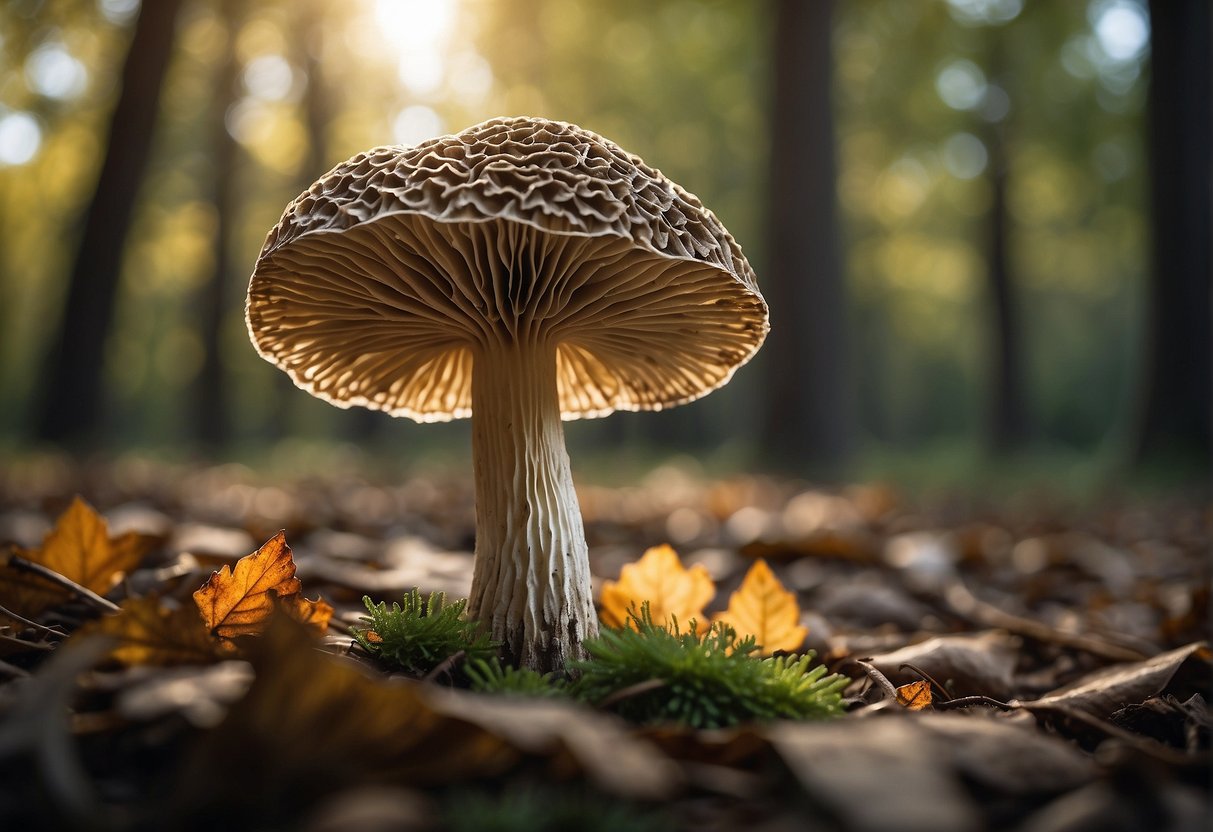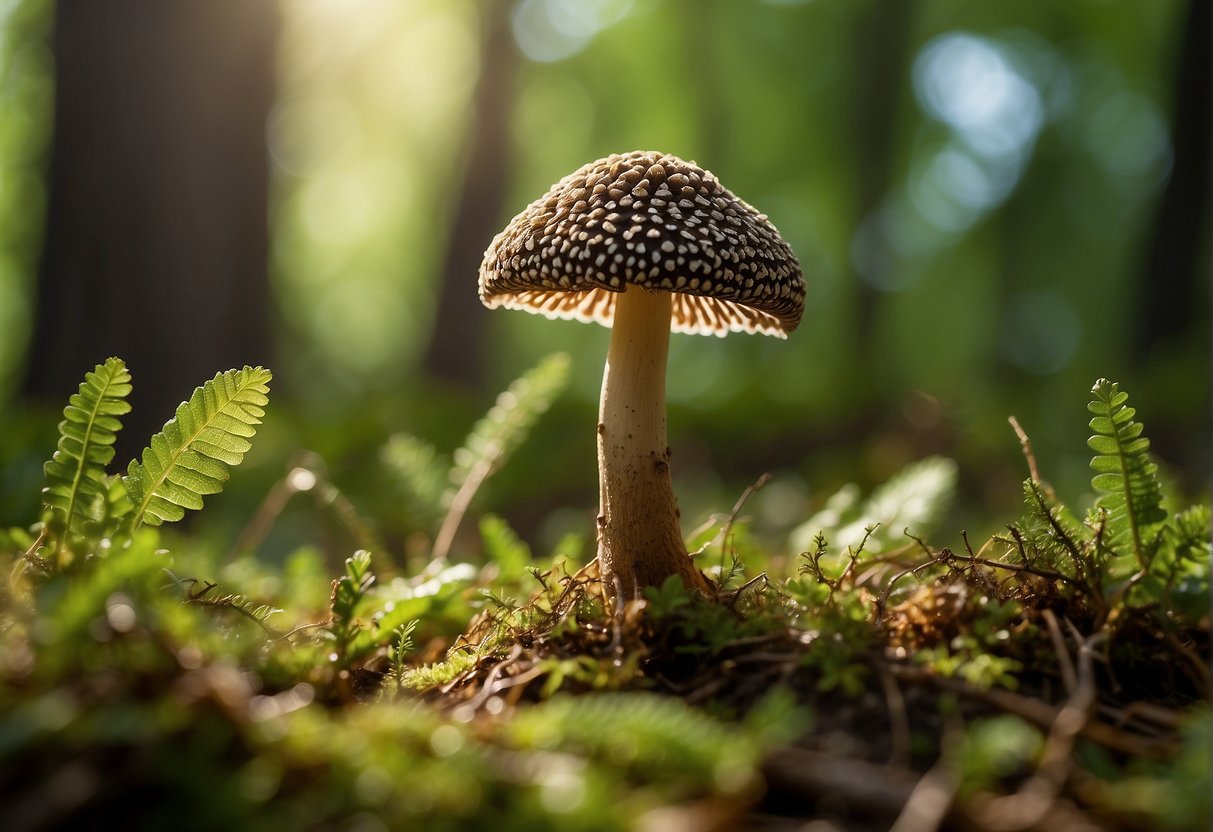True morels are a treasure trove for foraging enthusiasts and gourmet chefs alike. These distinctive mushrooms boast a unique appearance with a spongy-looking cap characterized by ridges and pits, resulting in their signature honeycomb structure. Found in woodland areas, true morels are sought after for their exceptional taste and can be a delightful find during a springtime hike.

Understanding their characteristics is essential for both safety and culinary enjoyment. True morels are completely hollow from the cap to the stem, and this trait is crucial for identification purposes, especially when distinguishing them from their toxic counterparts, false morels. Additionally, these fungi hold culinary prestige, but it is important to remember that they should never be consumed raw due to potential toxicity; cooking them properly enhances their flavor and ensures they are safe to eat.
Key Takeaways
- True morels are identifiable by their unique honeycomb cap structure.
- They must be thoroughly cooked before consumption to avoid toxicity.
- Proper identification is critical to distinguish true morels from toxic varieties.
Understanding True Morels
True morels, belonging to the genus Morchella, are a culinary delight for foragers in North America and the Northern Hemisphere. Recognizing the key features of true morels will help you distinguish these edible treasures from their toxic counterparts as you explore hardwood forests.
Morel Taxonomy and Species
Morchella, the genus of true morels, includes several species that mycologists have meticulously classified. The two most well-known types are the yellow morel (Morchella esculentoides) and the black morel (Morchella elata). These fungi belong to the family Morchellaceae and are distinct from other mushrooms due to their unique features.
Identifying Characteristics
When you’re searching for true morels, pay close attention to these telling attributes:
- Cap Shape: True morels have a distinct, honeycomb-like appearance, with a cap that is deeply pitted and ridged vertically.
- Hollowness: Upon slicing a true morel from top to bottom, you’ll find it completely hollow—a key identifier not seen in false morels.
- Color: While the color can vary, yellow morels tend to have a light tan to yellowish-cream cap, and black morels are darker, ranging from gray to almost black.
Habitat and Distribution
True morels favor the company of certain trees, thriving best in hardwoods forests. They’re often found near ash, elm, and apple trees, especially in regions where these trees have been stressed or are declining. True morels have a widespread distribution across the Northern Hemisphere, especially in North America, and emerge in the spring following a seasonal pattern that correlates with the warming soil temperatures.
Culinary and Nutritional Value
True morels are a highlight of the spring season, offering an exquisite taste profile and nutritional benefits that are highly sought after by gourmet cooks and health enthusiasts alike.
Edible Qualities of True Morels
True morels, encompassing varieties such as yellow morels and black morels, are treasured in the culinary world for their unique flavor. They carry a nutty and earthy taste that complements a variety of dishes. When you cook these mushrooms, their meaty texture allows them to stand up well to sautéing and other cooking methods favored by those who know their way around the kitchen.
Foraging Tips and Techniques
Spring beckons you, the mushroom hunter, to the great outdoors in search of the elusive true morels. These fungi favor moist woodlands and areas that have recently been burned. Always ensure that what you find is a true morel, with the cap attached directly to the stem and completely hollow inside. Reliable identification is crucial, as there are false morels that can be harmful if consumed.
Health Benefits and Nutrients
Morel mushrooms are not just a delight for your taste buds but also a boon for your health. They are rich in iron and fiber, supporting blood health and digestion. One of their most notable nutrients is vitamin D, indispensable for bone health and immune function. As part of a balanced diet, the edible true morels can contribute positively to your nutrition, especially when foraged fresh from the wild.
Distinguishing From False Morels
In your foraging adventures, you must be able to identify the safe edibles; true morels (Morchella esculenta) are treasured finds, while false morels (Gyromitra species) can be harmful. Learning to differentiate between the two is crucial to a rewarding and safe mushroom hunt.
Physical Differences
True Morels:
- Cap: Distinct honeycomb appearance, with deep pits and ridges.
- Structure: Hollow from stem to tip.
False Morels (Gyromitra esculenta and other species):
- Cap: Irregular and lobed, resembling a brain or ruffled appearance.
- Structure: Frequently contain cottony or chunky tissue inside the stem and cap.
Potential Risks and Toxicity
False Morels contain a toxin known as gyromitrin, which metabolizes into monomethyl hydrazine (MMH)—a compound also found in rocket fuel. While not every Gyromitra species is poisonous, consuming those with toxins can lead to symptoms like dizziness, severe gastrointestinal distress, and in rare cases, even death. Always ensure proper identification; when in doubt, leave it out.
Growth and Conservation

When you’re out in the wild, on the hunt for the elusive morel mushrooms, understanding their lifecycle and the importance of sustainable foraging can enhance your experience while helping to preserve these natural treasures for future generations.
Morel Mushroom Lifecycle
Morels, belonging to the genus Morchella, are a unique and sought-after member of the Morchellaceae family within the Ascomycota phylum. The lifecycle starts when spores, released by a mature morel, land in suitable soil and go through spore germination. This stage is critical as it gives rise first to the hyphae and then to the mycelium. Morels form symbiotic, mycorrhizal relationships with trees, meaning they exchange nutrients with their host, a fascinating aspect of mycology. During the right spring conditions, which typically include soil temperatures spanning from around 45°F to 60°F and high humidity, morels transition from subterranean mycelium to the fruiting bodies you forage for.
Conservation Efforts and Sustainability
Conservation in the context of morels means practicing mindful mushroom foraging to avoid overharvesting. It’s your responsibility to inform yourself about local regulations and sustainable practices. When you’re identifying morels, it’s crucial to differentiate between true morels (edible) and poisonous mushrooms to ensure both your safety and that raw consumption is a delight rather than a danger. It’s also vital for the health of morel populations that you do your part in cultivation efforts by not disrupting the mycelium and by following morel mushroom identification guidelines to only pick mature specimens. Remember, the common morel is a wild delicacy whose presence next season relies heavily on the decisions you make while foraging today.

